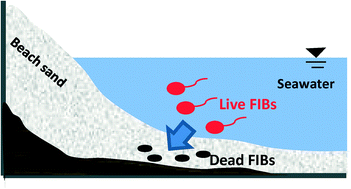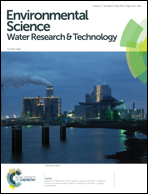Impact of indigenous microbiota of subtidal sand on fecal indicator bacteria decay in beach systems: a microcosm study†
Abstract
Fecal contamination of coastal recreational water can adversely impact the public health and economic well-being of coastal communities. The current recreational water management practices focus primarily on water itself, while recent studies have identified other beach system components that can impact water quality. The objective of this study was to use microcosms to determine whether subtidal beach sand can enhance the decay of fecal bacteria and identify underlying mechanisms. The decay patterns of exogenous Enterococcus faecalis cells in laboratory beach microcosms for three beaches in Hawaii were determined, and beach sand indigenous microbiota was identified to be the major factor correlating to bacterial decay rates. Subsequent experiments observed that higher indigenous microbiota corresponded to faster bacterial decay. Comparison between the two major beach system components (beach sand and seawater) indicated that the indigenous microbiota in beach sand played a significant role in bacterial decay. Manipulating two important beach characteristics (sand-to-water ratio and sand particle size) that relate to indigenous microbiota abundance also resulted in different bacterial decay rates. The significant contribution of beach sand and its indigenous microbiota to fecal bacteria decay identified a positive function of beach sand in beach water quality management, which supports the inclusion of beach sand in beach quality management.


 Please wait while we load your content...
Please wait while we load your content...